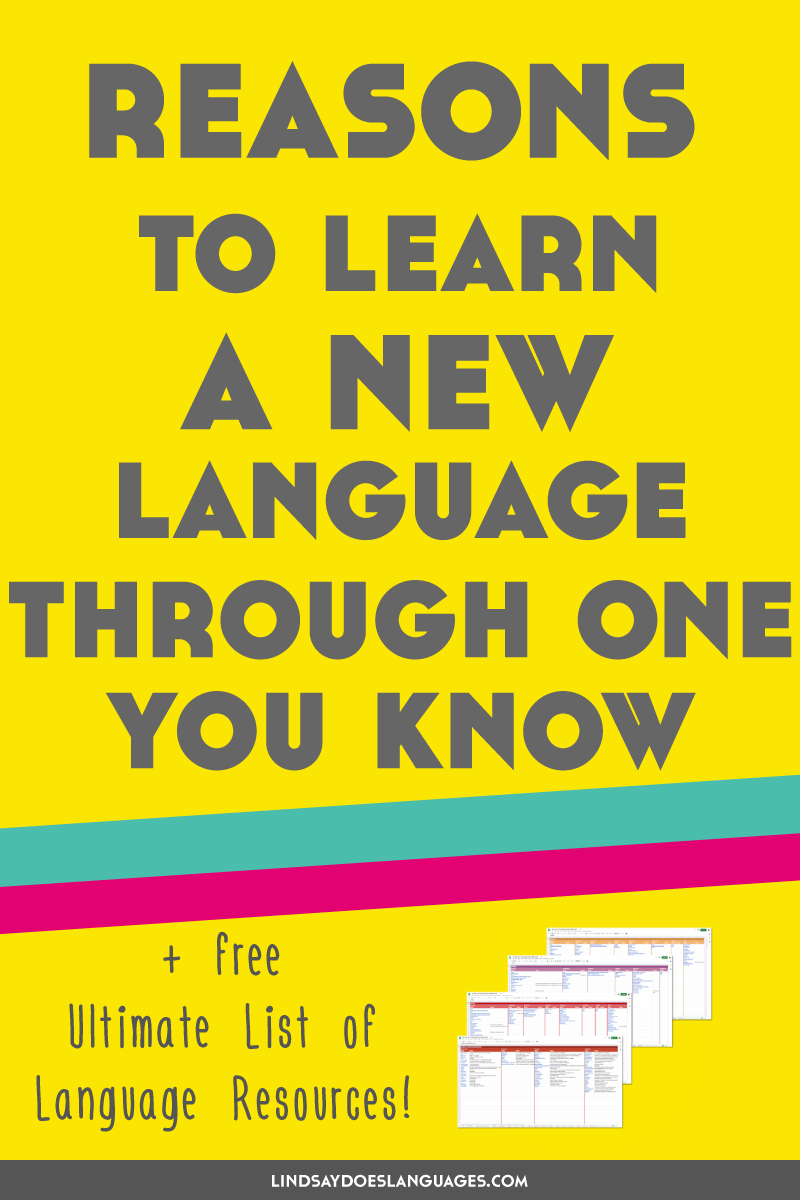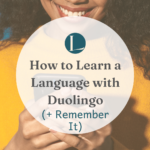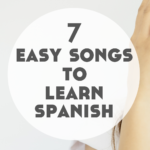November 18th, 2020
Reasons for Learning a New Language Through A Language You Know Already
The more languages you learn, the easier it gets. True story. However, there is a downside. The more languages you learn, the harder it becomes to maintain them all because, you know, we still have just 24 hours in a day. One way you can keep learning new languages and help to maintain the others is by learning a new language through a language you know already. Here’s why and how.

Why learn a new language through another you know already?
1. You learn so much about the first language
Writing from experience here.
When I started to learn Guarani, an indigenous language spoken in Paraguay and surrounding countries in South America, 90% of the resources I found (and there were few to begin with) were in Spanish. Luckily, I do speak Spanish and it’s one of my stronger languages, so this wasn’t a problem. In fact, it’s been a bit of blessing in disguise as it’s meant I’ve been getting extra Spanish exposure. Woohoo!
From this as well, I’ve learnt some new words in Spanish too, which is a nice bonus. And I’ve learnt a lot about the Spanish spoken in Paraguay too.
2. You end up with a fun trilingual set of notes!
My notes for Guarani aren’t what I’d describe as messy but they are a mixture of three languages. Ha!
English, Guarani and Spanish mix together on the page in a way that only makes sense to me.
When you’re learning a language through a language you know already, you’ll find that your notes become an interesting trilingual combination, which is actually pretty fun.
3. You give your brain a workout.
Learning just one other language is already a huge advantage at any age, and great for the brain.
Imagine what happens when you start learning another language through one you already have learnt – in other words, not via your native language.
That’s like the brain equivalent of lifting weights with your legs instead of your arms. I dunno, I don’t gym, is that a thing?
What I’m trying to say is it’s unexpected. You’re building new synapses (brain connections) using ones stored in a different part of the brain than your native language.
I think. I’m not a neuroscientist. So I’m just gonna put this video here to back it up…
4. It’s a great way to keep the other language alive
Like I mentioned at the very start of this post, learning other languages makes it difficult to find time to keep up with the previous ones you’ve studied.
Using a language you already know to learn another is a great way to keep the first language fresher in your mind, something we’re always looking to do.
5. Access to different resources
If I didn’t speak Spanish and I wanted to learn Guarani, it would have been near impossible. Knowing Spanish made the whole experience much easier by giving me access to a whole range of different resoruces.
This is true for any language.
If you speak French, Assimil is an awesome resource you can take full advantage of to learn other languages. (They do have lots of resoruces for and from other languages too!)
If you know German already, Langenscheidt are a lot of fun, and look pretty gathered together on the shelf, which is no bad thing.
If you want to learn Balinese for example, you’ll likely find a lot more out there to do so in Indonesian than in English.
I’m forever intrigued by the possibilities that open up for learning other languages once you have one under your belt.
How to do it
Ok, so you’re convinced by now that this is a good idea. But how do you go about doing it? Here are a few tips to get started…
Find a language school
Maybe there’s already the opportunity waiting for you in the form of a language school abroad in a country that speaks a language you’ve already learnt, and at a school that teaches a new language you haven’t learnt yet.
I spent a week in Paraguay at IDIPAR learning Guarani, which was taught in Spanish.
To find out more about how to choose language schools abroad, I wrote this article to help you decide.
Try resources you currently use.
I was also pleasantly surprised with Guarani that I found multiple resources in places we’d normally look first for any language.
Duolingo, Memrise and Clozemaster all have options for learning some basic Guarani, which has really helped me to keep learning on the go.
The Duolingo course is taught through Spanish. When you change the language under “I speak” on Memrise, there’s some additional Guarani courses too.
On top of that, something you may not have considered is Wikipedia in the language you’re learning.
For Guarani, I always have a Wikipedia tab open on my phone which is perfect for moment when you’re waiting in a queue or on a train platform and not sure if you have quite enough time for a quick session on Duolingo, Memrise or Clozemaster.
Also be sure to check podcasts. Try searching in the language you want to learn through rather than English or your native language.
Related: All The Indigenous and Endangered Language Learning Apps You Need
Find a tutor that doesn’t speak your language
Sometimes you might need to take more control over your study if you want to learn one language through another you know already. One way to do this is to find a tutor who doesn’t speak your native language, or if they do speak it, request that they don’t in your lessons.
Yes, at first they might think you’re a little strange, but once they realise that you’re serious, chances are they’ll settle in and be comfortable with it.
Just bilingual notes
This is something I haven’t done too much with Guarani! My notes are a trilingual combo of English, Spanish and Guarani!
However, if you’re really serious and don’t want interference, you can be more conscious of only writing notes in your two languages, i.e not including your native language.
Look for bilingual books
See if there’s any bilingual books or parallel texts out there.
It might take you a little longer to find them, especially if you’re studying a lesser studied language or you’re a native English speaker (and everything you find seems to be bilingual with English!) but it’ll be worth it if you can find them.
As resources, bilingual books can be great tools to practice your reading (of course), increase your grammatical and vocabulary knowledge in the language, and a helpful tool to start speaking the language (by reading out loud).
Look for teachers/channels on YouTube or social media teaching from your language you already know
If you keep your searches for resources to the language you want to learn from then you might be surprised at what you find.
Especially if there’s a connection of some kind between the two languages, you may come across new YouTube channels, blogs, websites, social media pages etc teaching you the language you want to learn via a language other than your native one.







